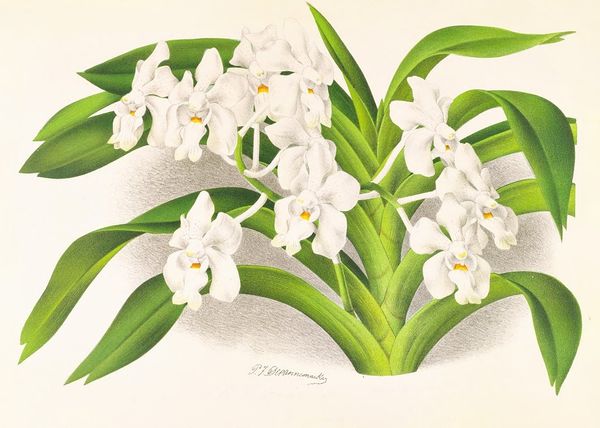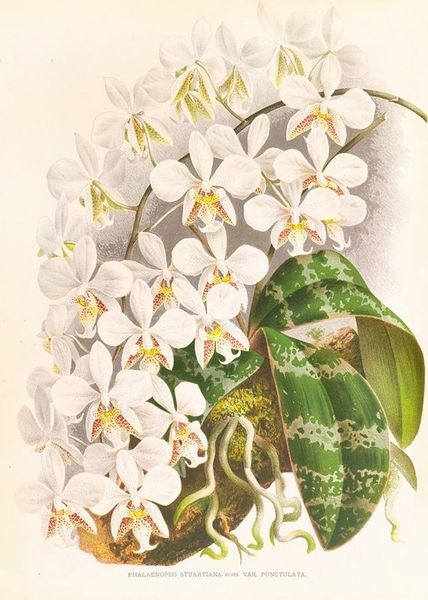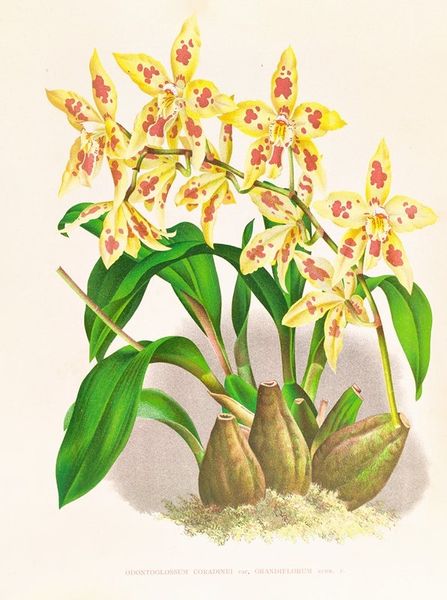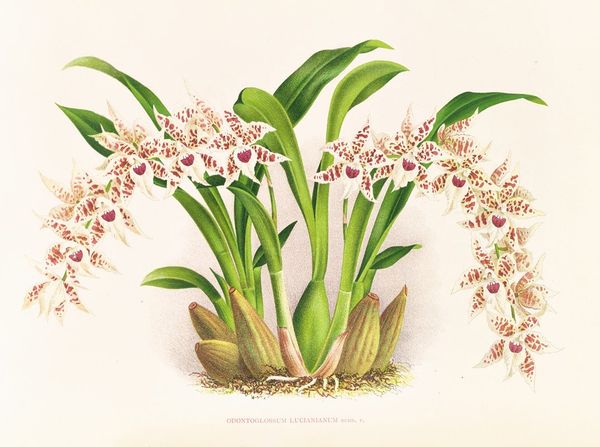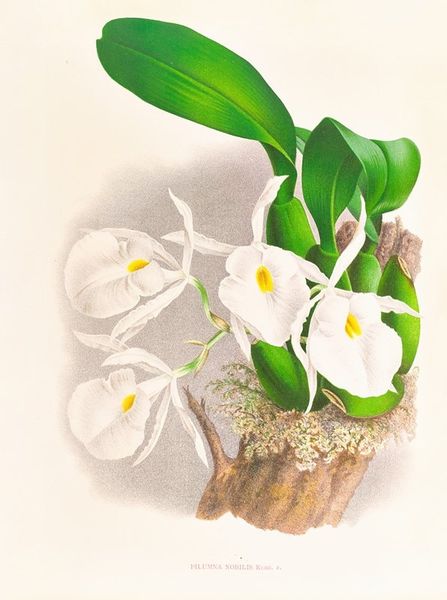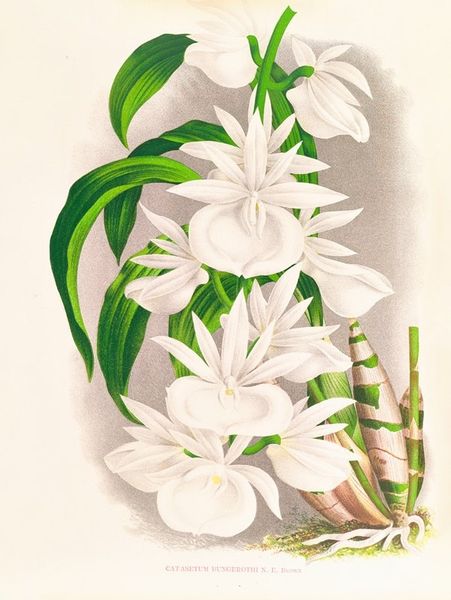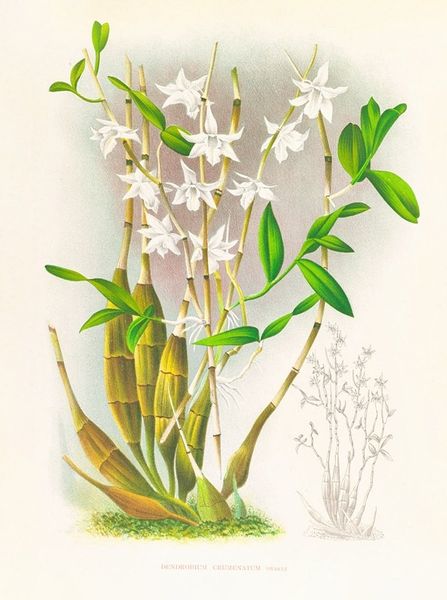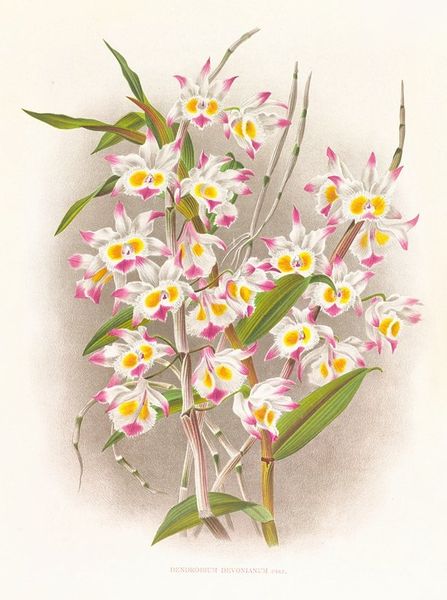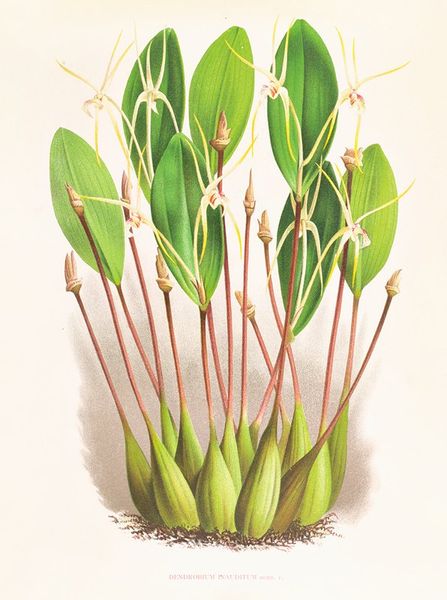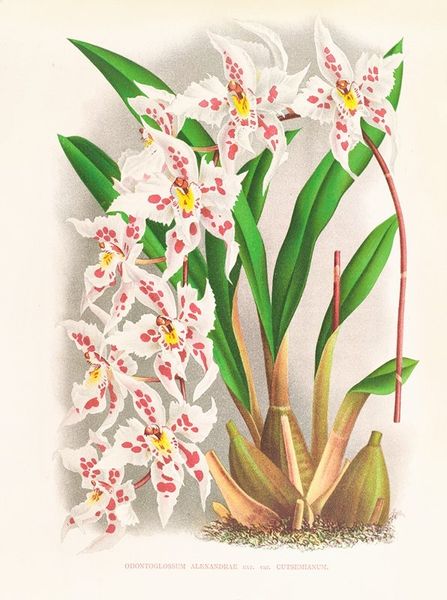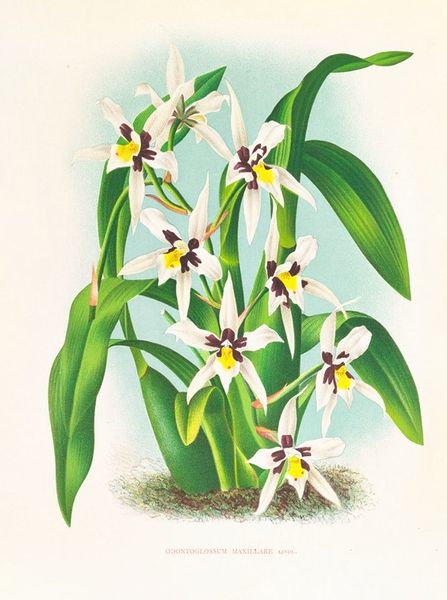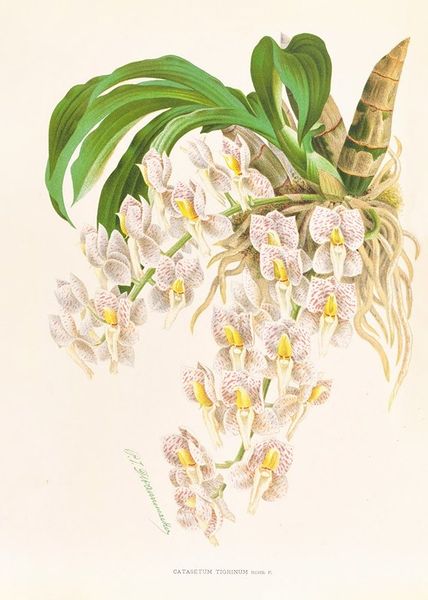
watercolor
#
watercolor
#
watercolour illustration
#
academic-art
#
botanical art
Copyright: Public Domain: Artvee
Editor: We’re looking at “Trichopilia Suavis,” a watercolor illustration made between 1885 and 1906 by Jean Jules Linden. It’s a wonderfully delicate botanical study. What catches my eye is the precision in capturing the orchid’s form, but also the almost scientific detachment of the image. What strikes you most about this piece? Curator: What immediately comes to mind is the Victorian era’s fascination with the natural world, driven by exploration and colonial expansion. Botanical illustrations like this served a critical function; they were a way of documenting and classifying the newly discovered flora of distant lands. What do you think the artist’s, or rather the publication’s, intention might have been in circulating these images? Editor: I imagine it served both scientific and aesthetic purposes? Informing botanists, but also appealing to the wealthy who sought exotic specimens for their gardens or conservatories. Kind of like a plant catalog meets fine art. Curator: Precisely. These images became tools of empire, subtly reinforcing the idea of European dominance over the natural world. These plants weren't just beautiful objects, but commodities with potential economic value. We must remember that museums, botanical gardens and publishing houses played a role in promoting colonial enterprises. Do you see any specific visual elements reinforcing that impression? Editor: Hmm, the stark white background isolates the orchid, removing it from its natural habitat, making it an object to be observed and, perhaps, possessed. Curator: Exactly. The careful, almost clinical detail, reinforces a sense of control. It’s as though we’re meant to see it primarily as a specimen, not a living organism. Editor: I hadn't considered it that way. It’s amazing how a seemingly innocent botanical illustration can reveal such complex historical narratives! Curator: Indeed. By examining the social and historical context, we see these artworks as active participants in shaping perceptions and power dynamics.
Comments
No comments
Be the first to comment and join the conversation on the ultimate creative platform.
